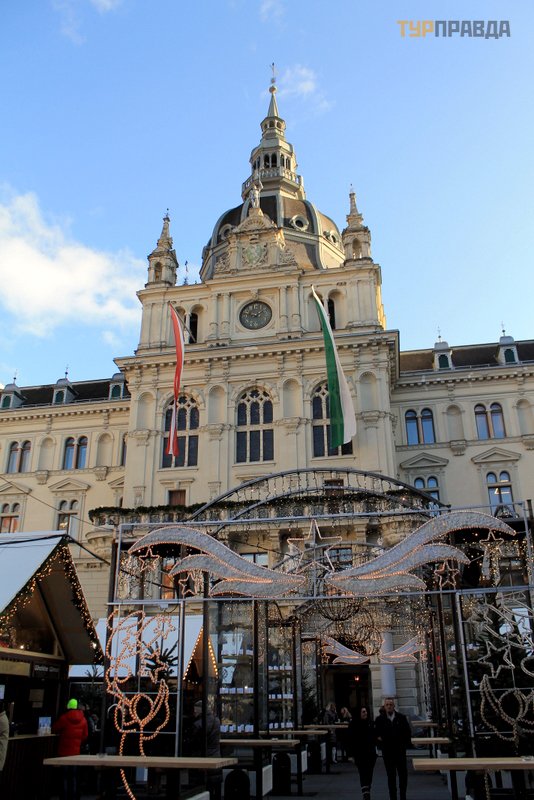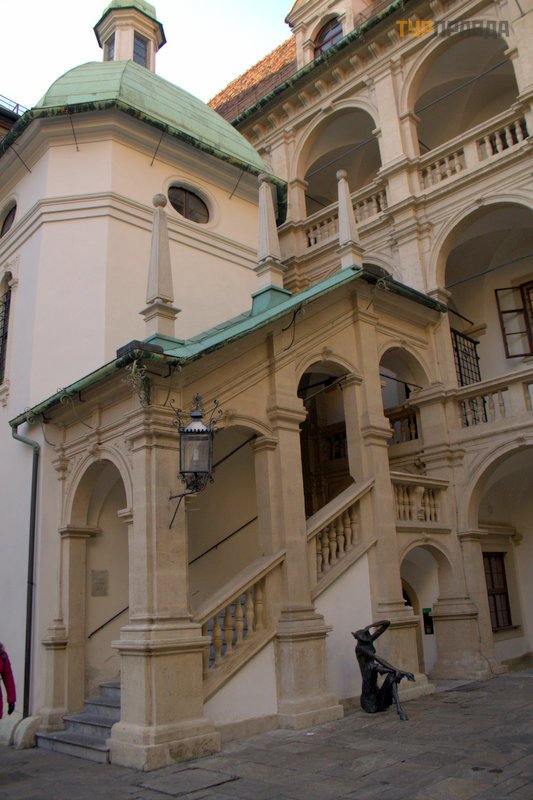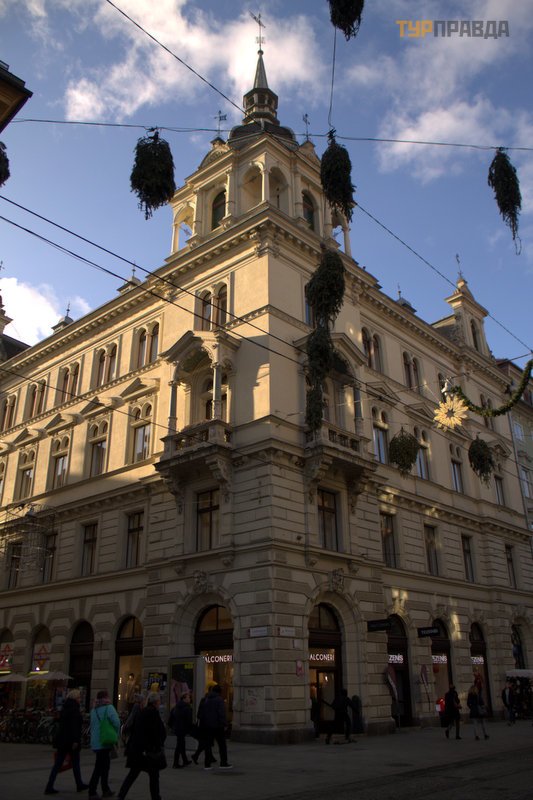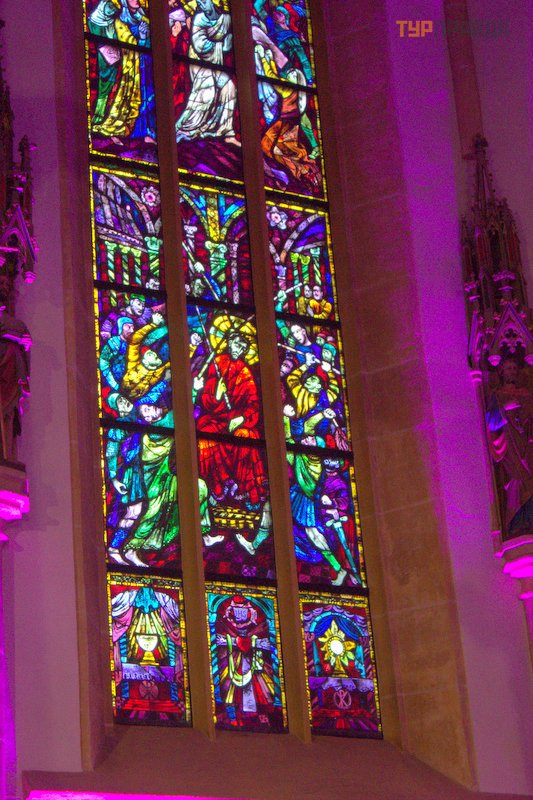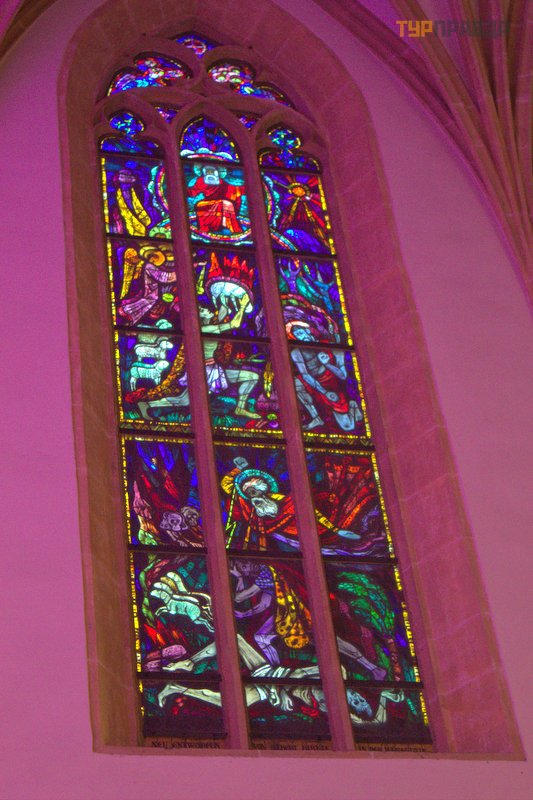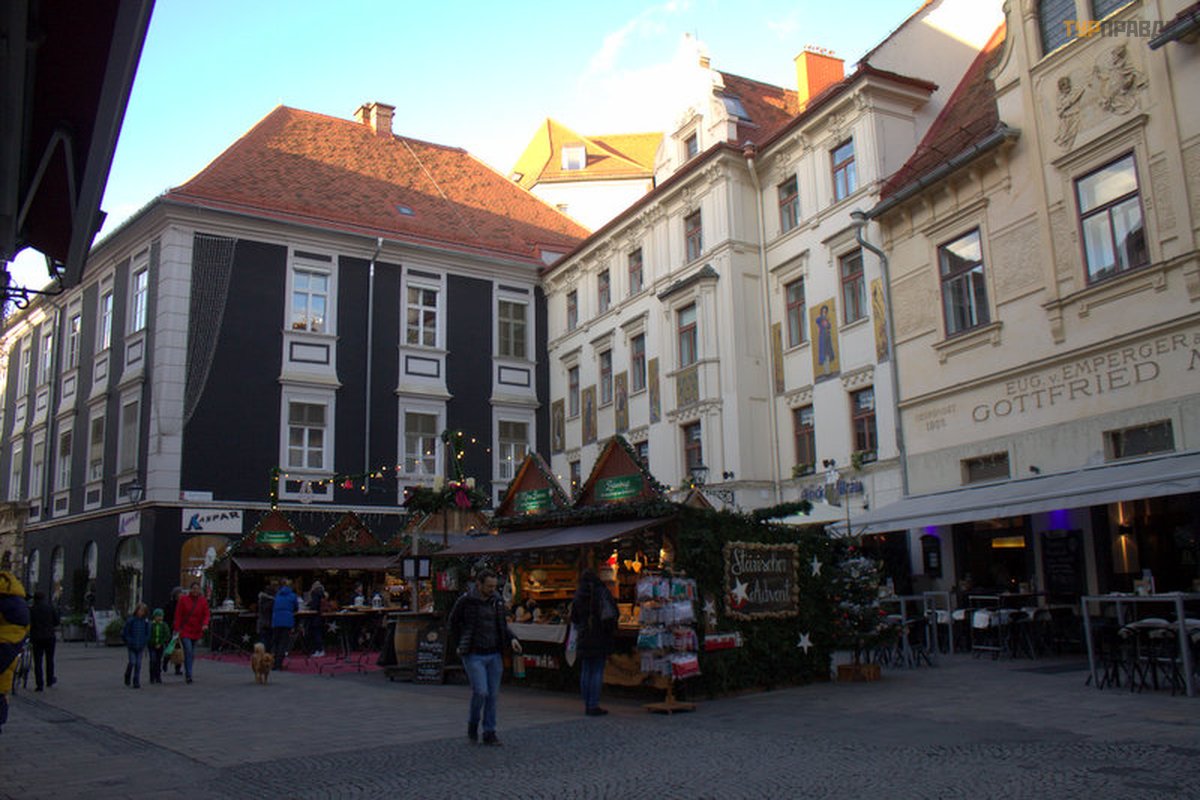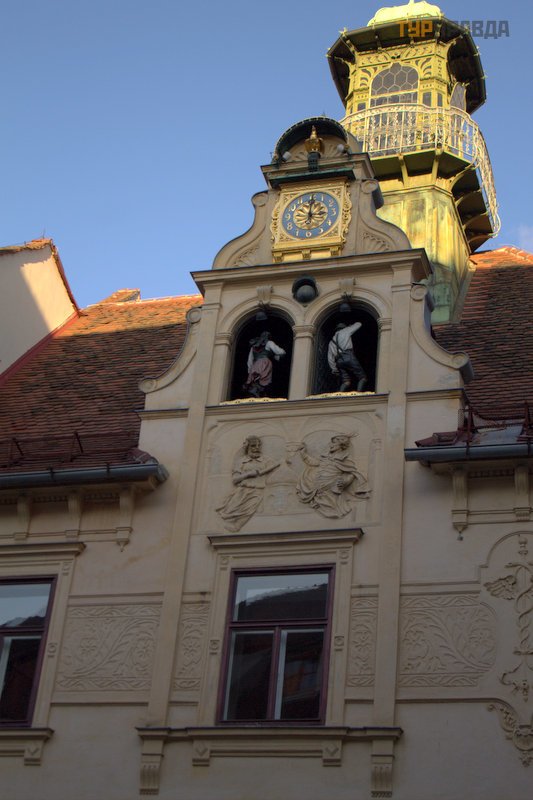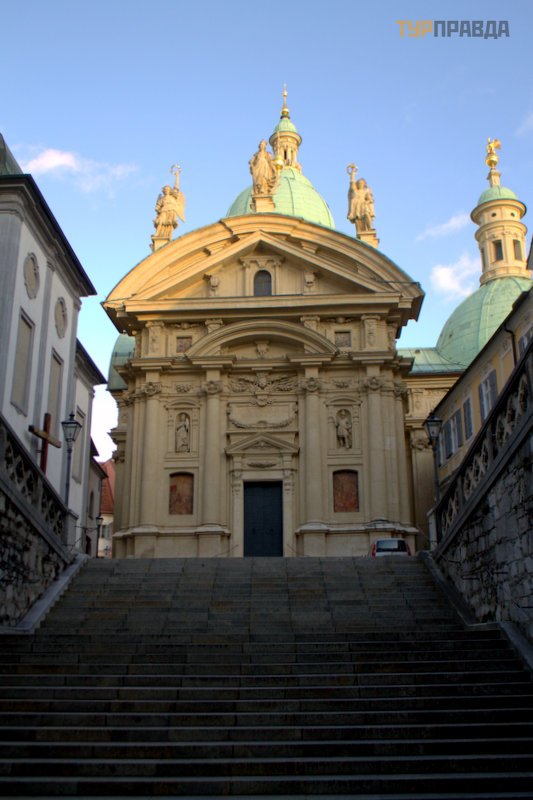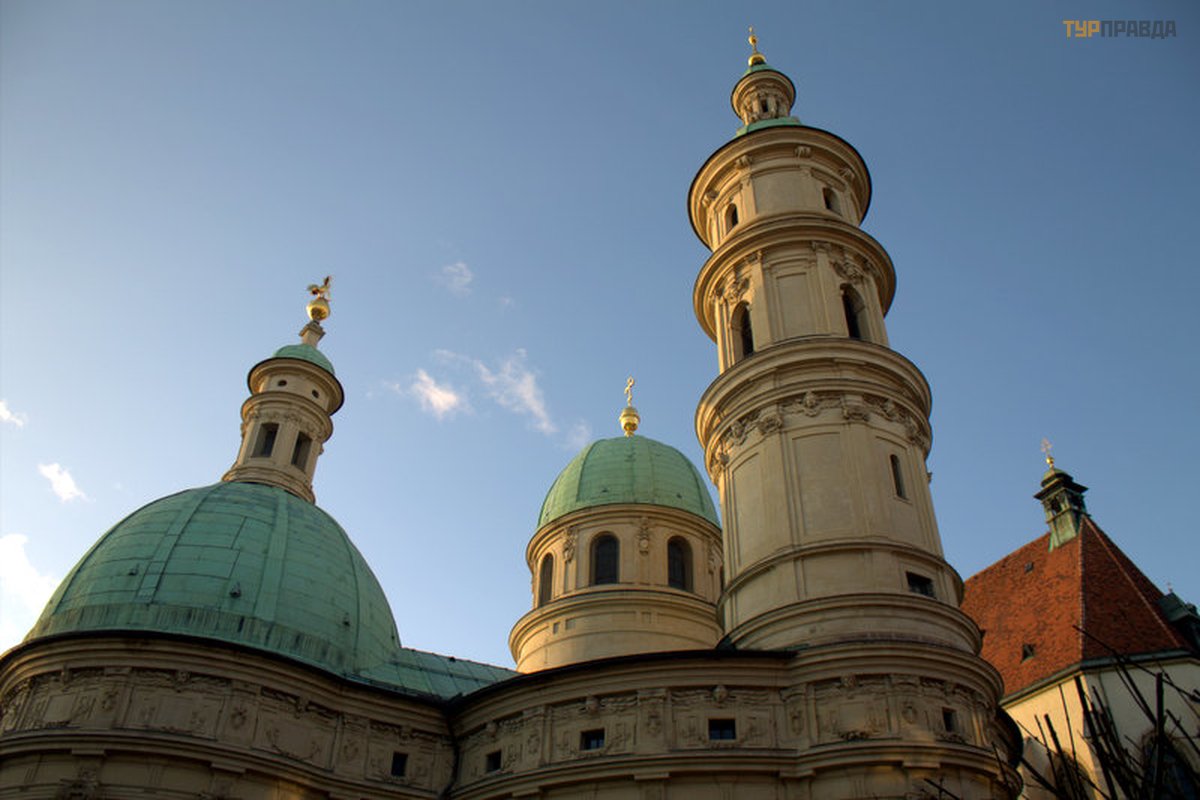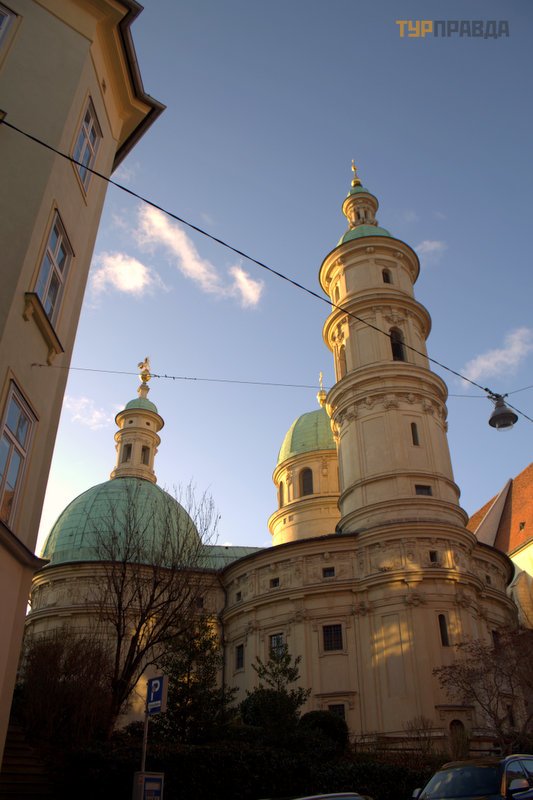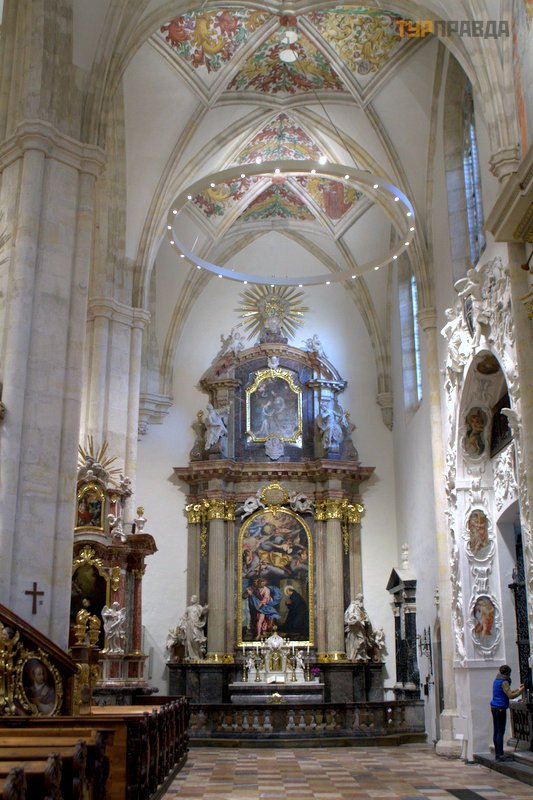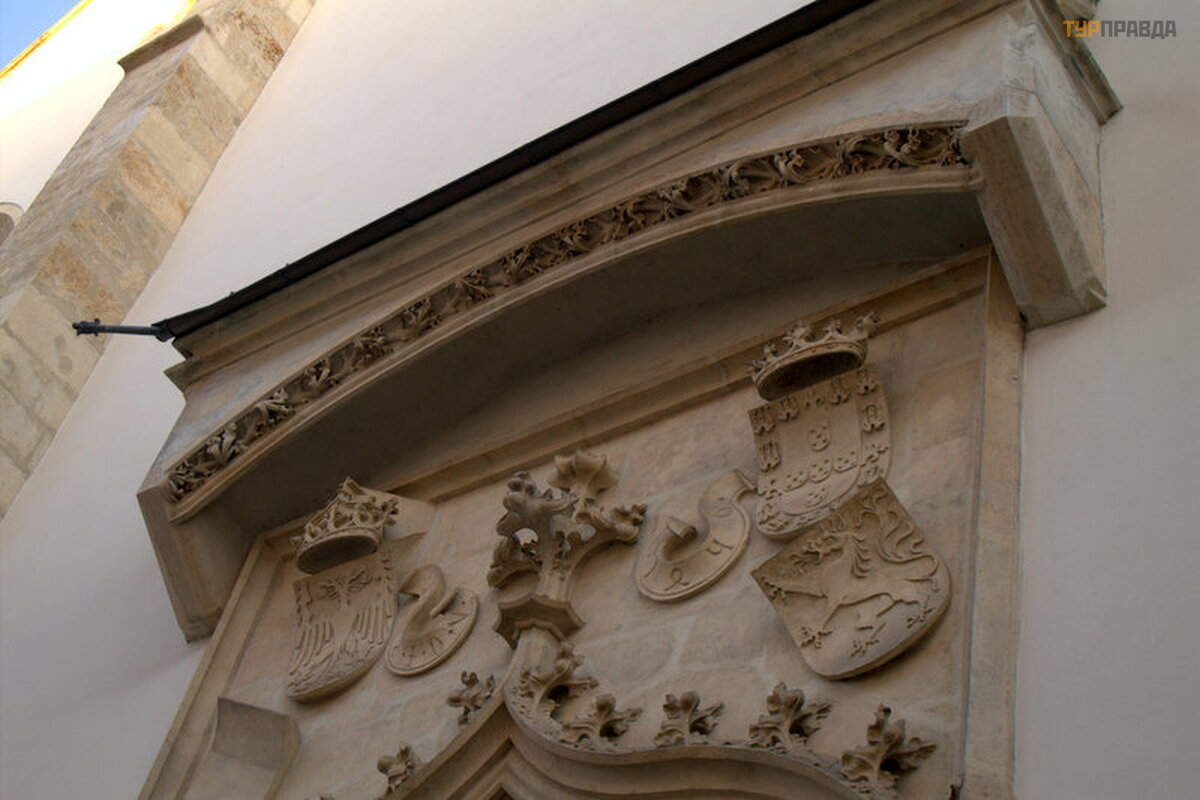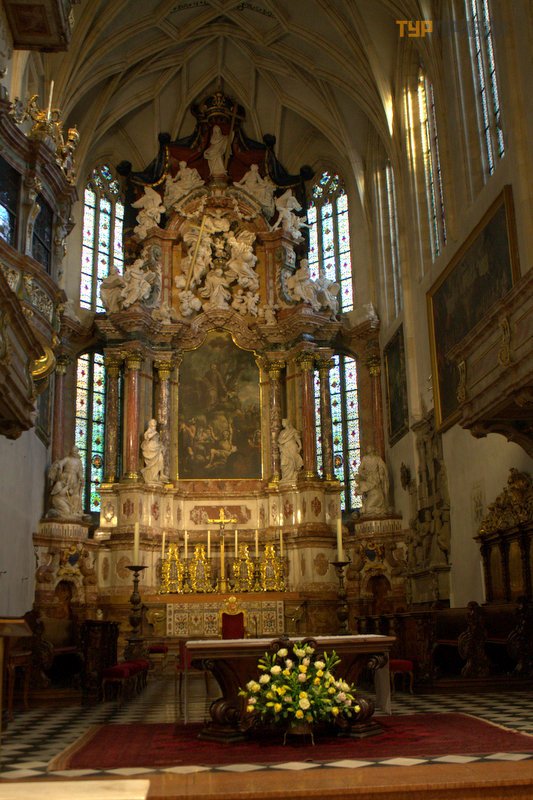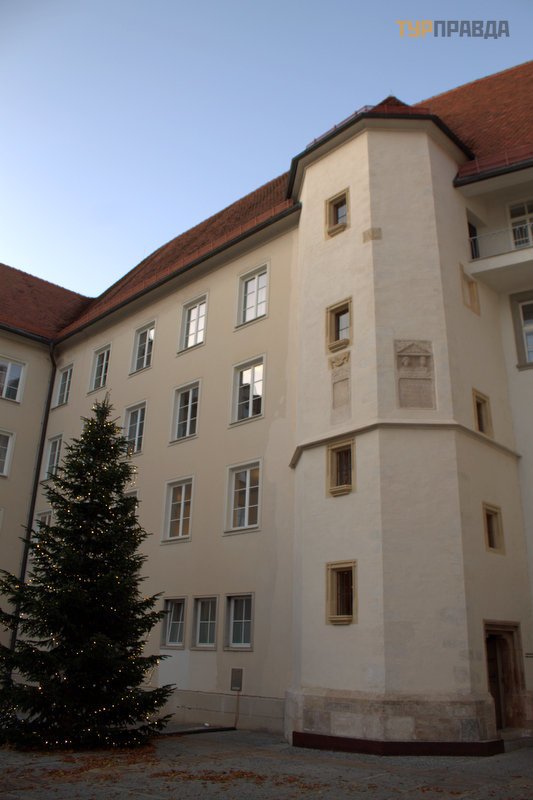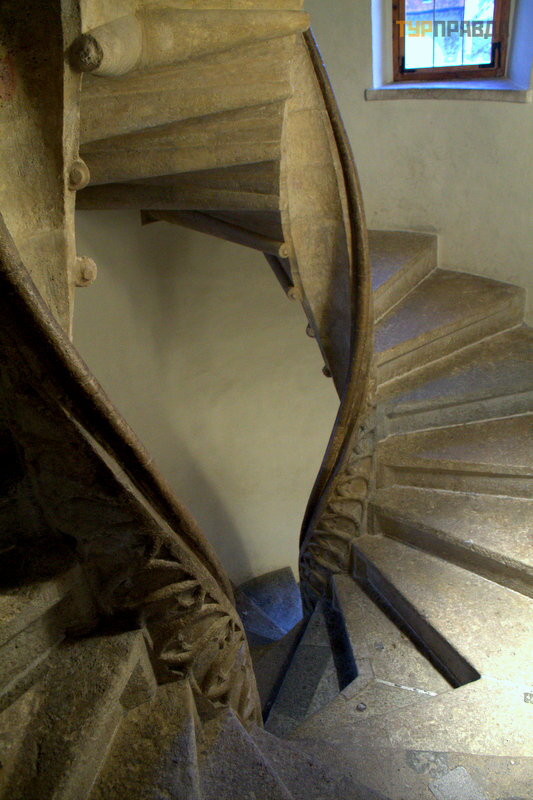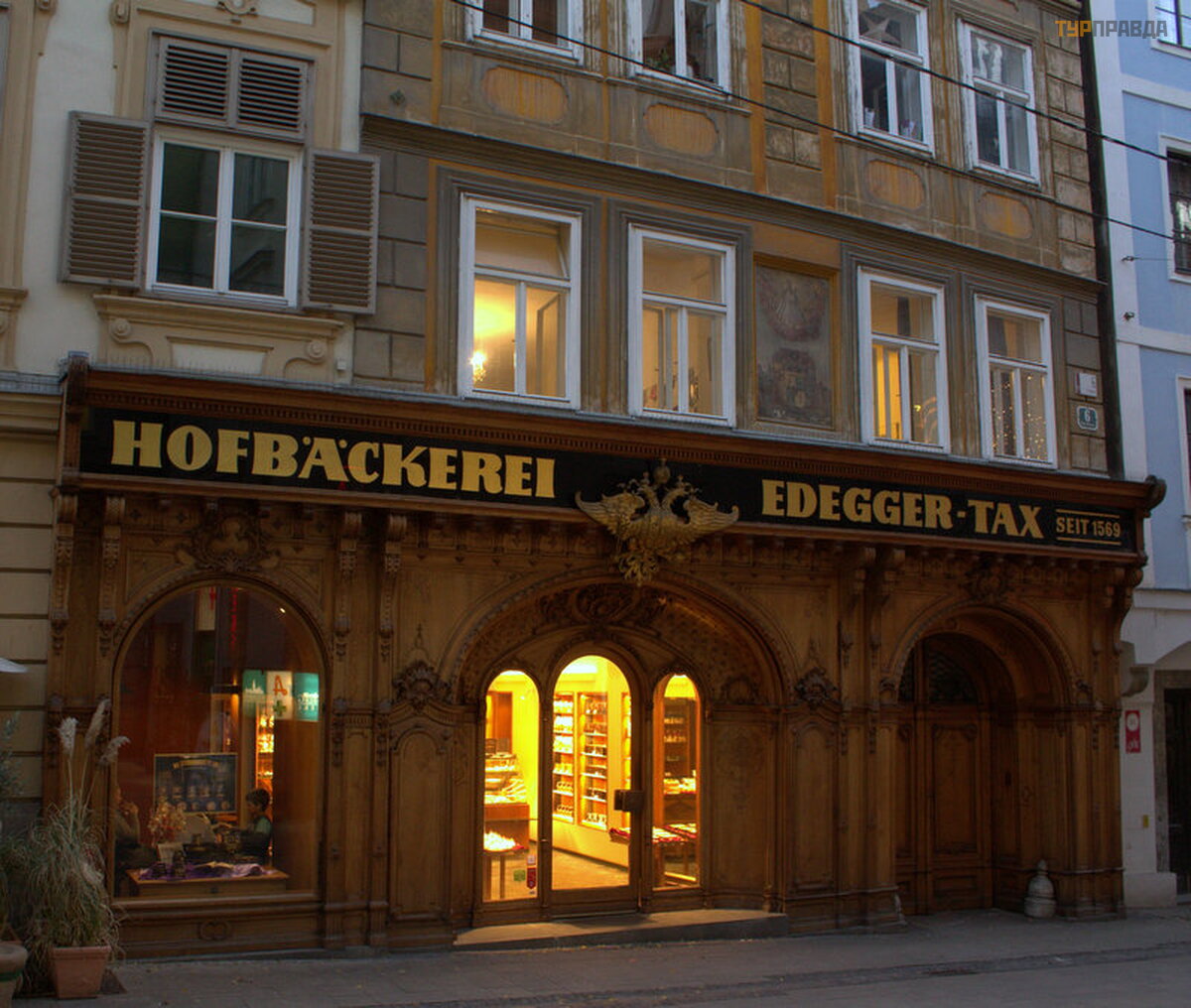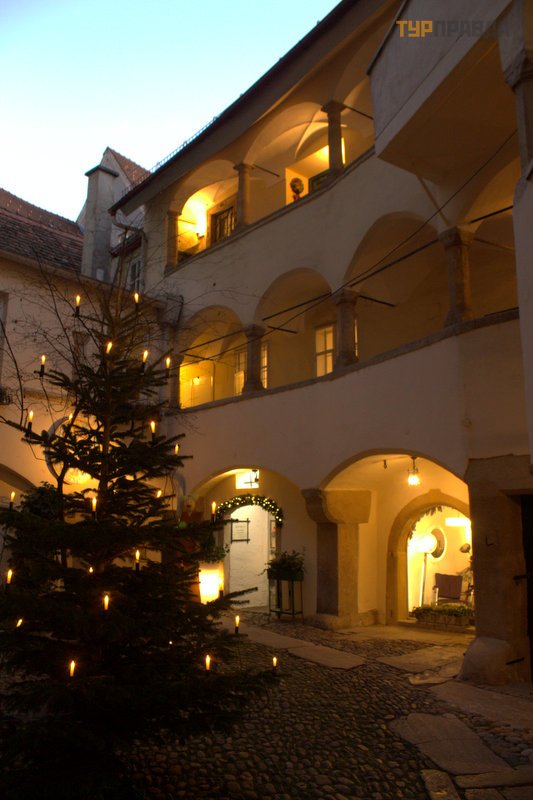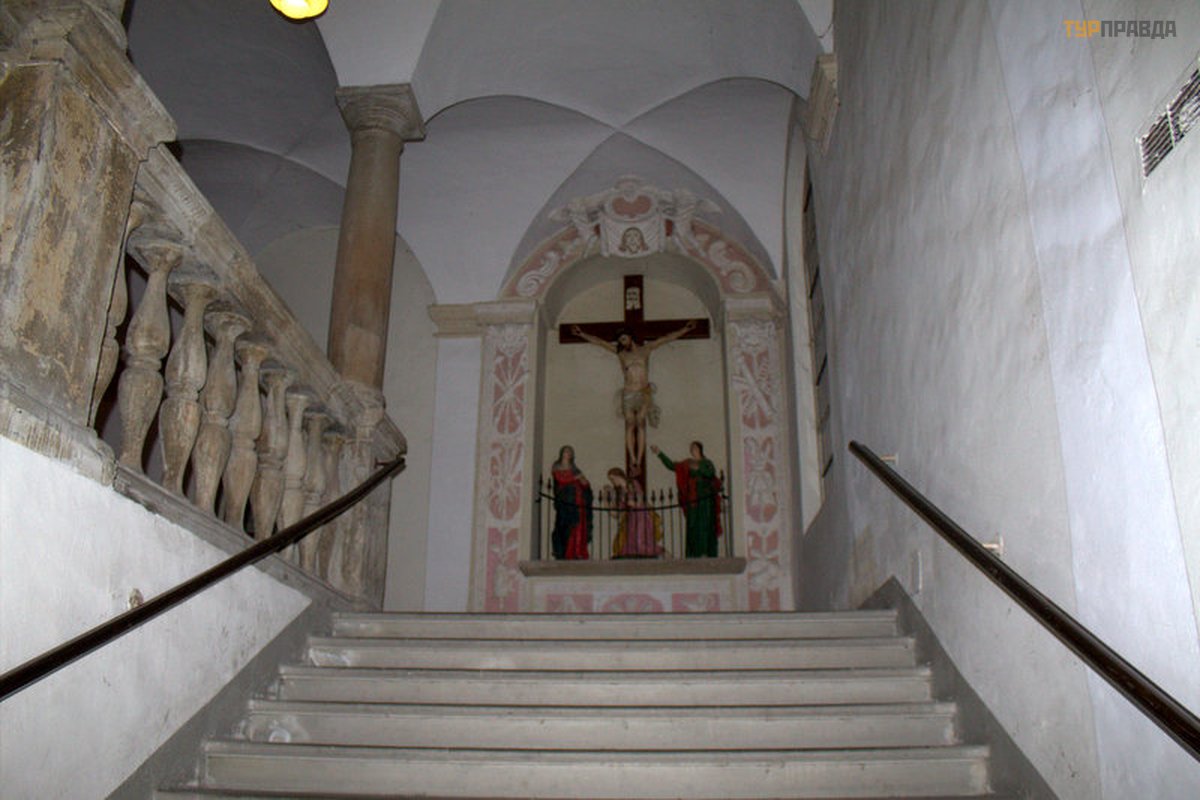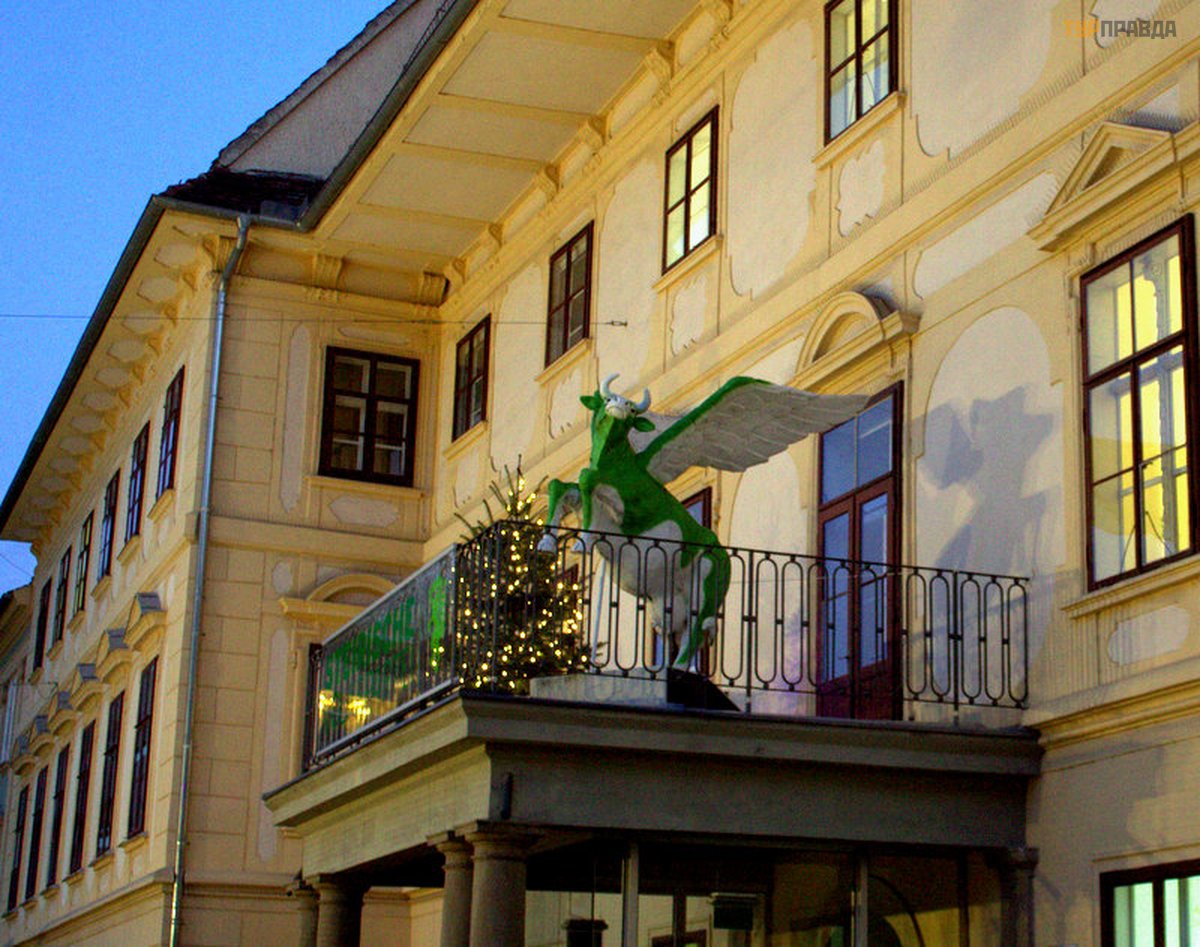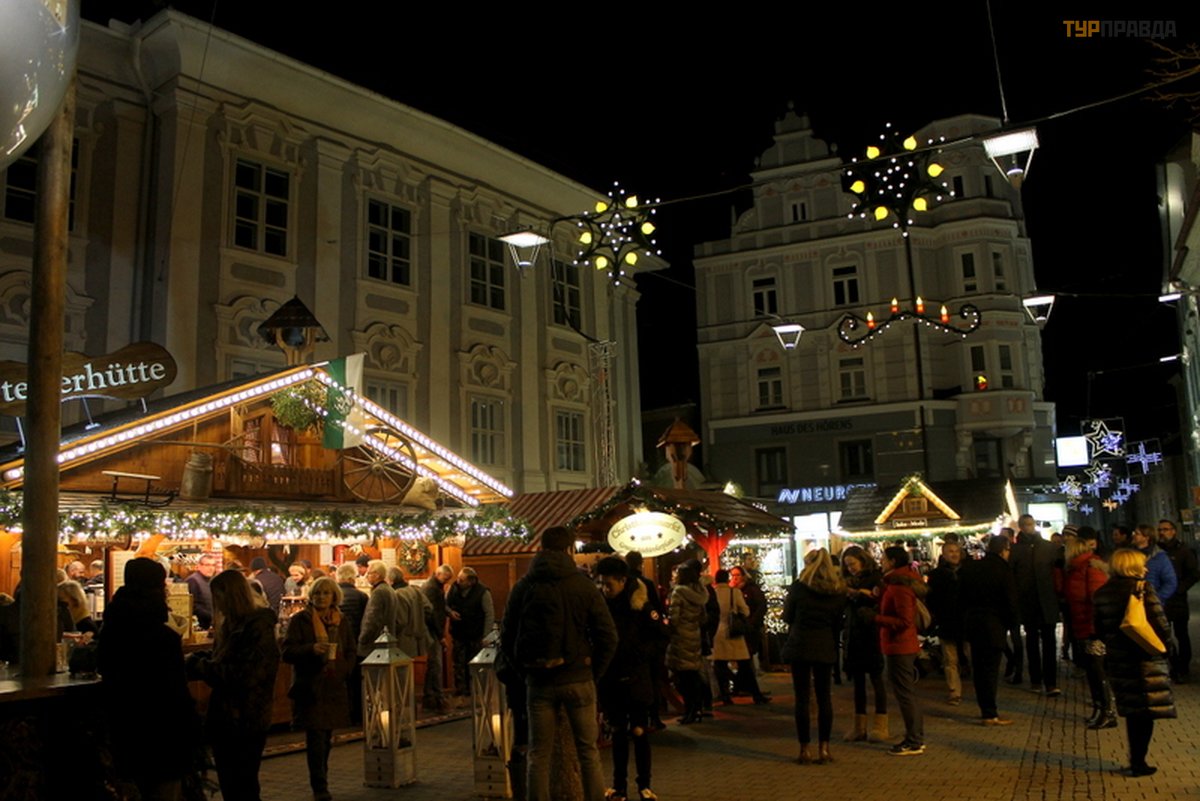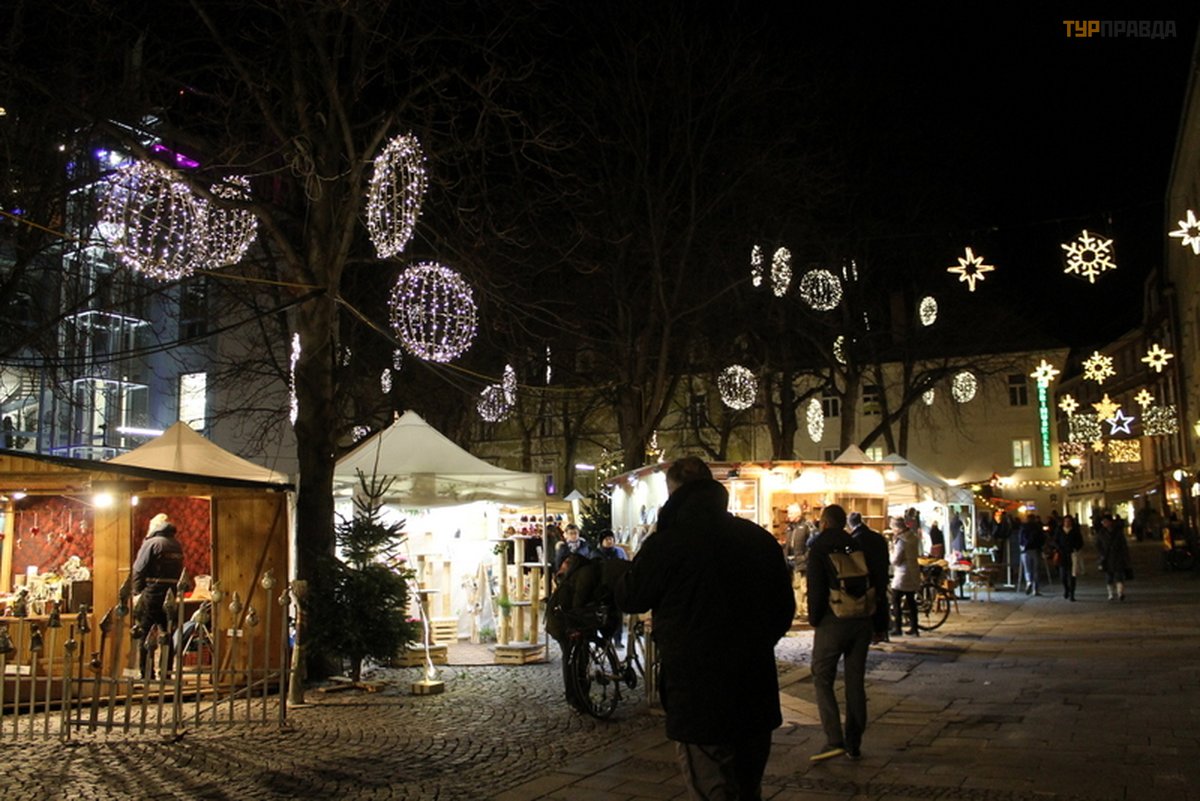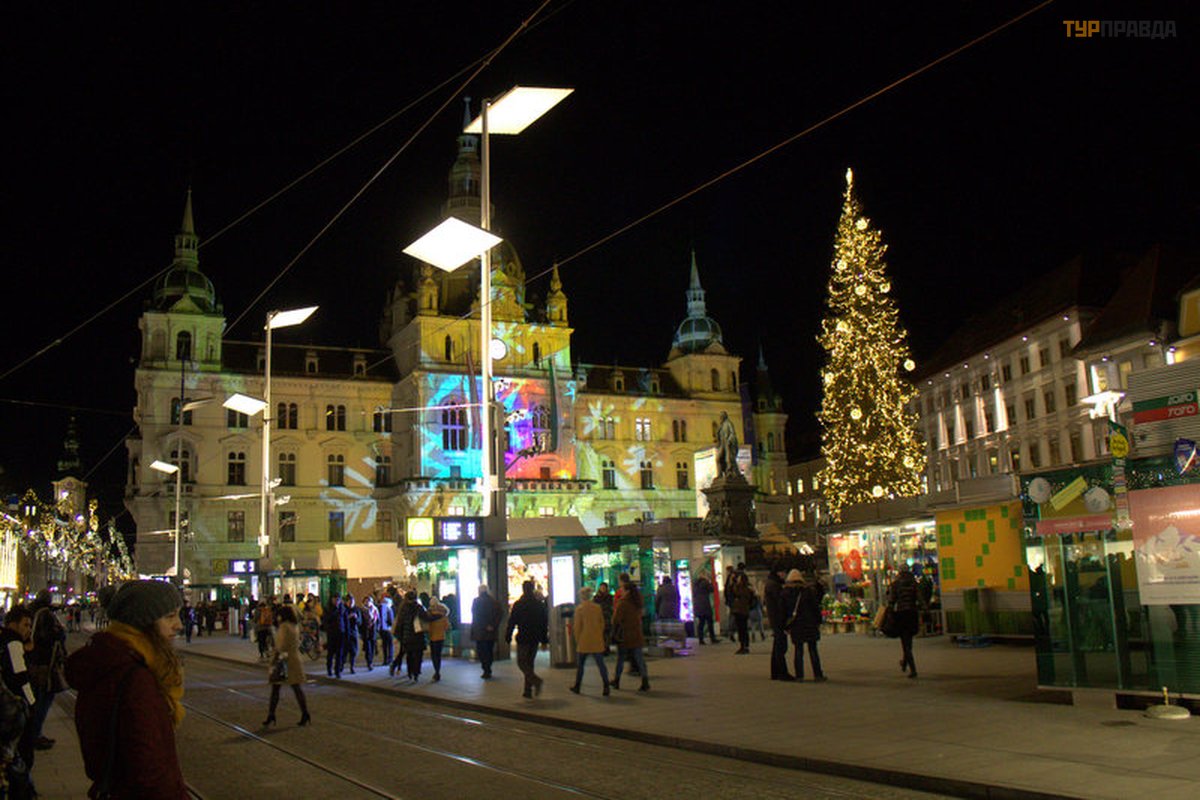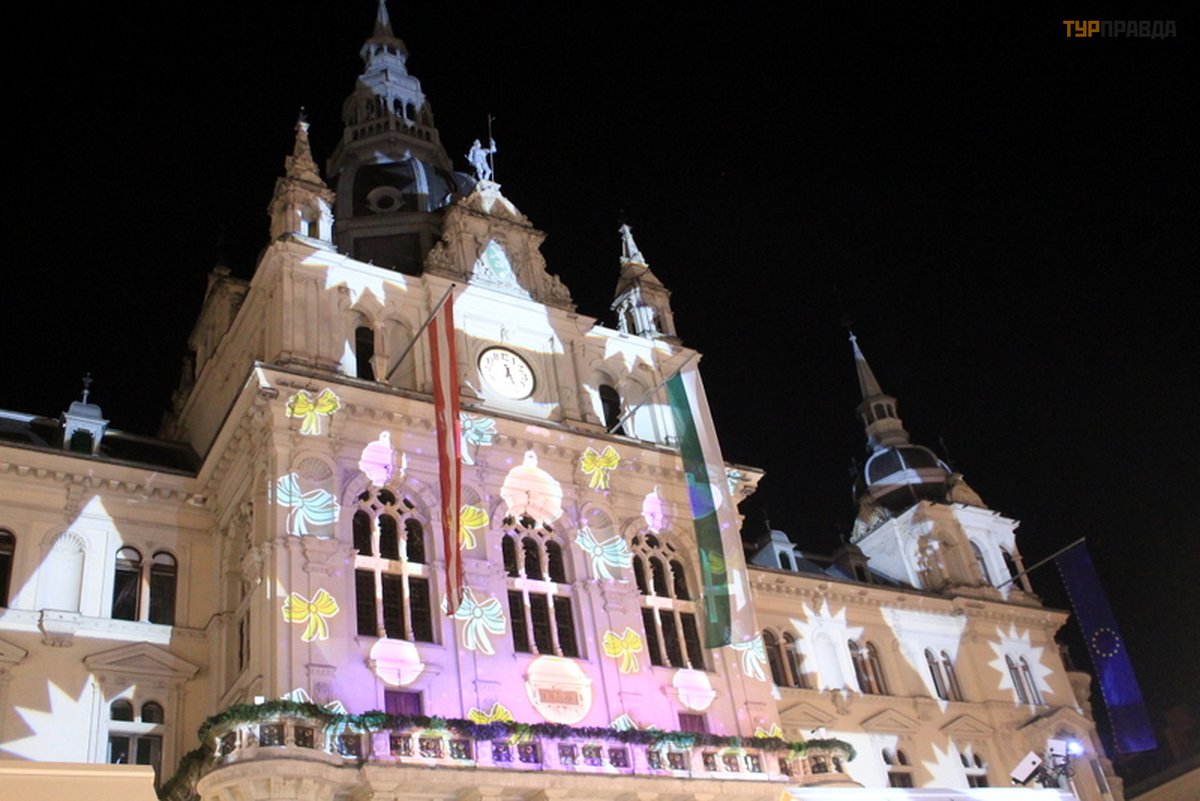To Austria for Christmas and beyond. Day four. Graz. And finally the first snow. Part 2

Day One. Vein. Trade fairs. Introduction
Day two. Viennese environs and a few more fairs. Part 1
Second day. Viennese environs and a few more fairs. Part 2
Third day. Linz. Traveling on a double-decker train. Part 1
Third day. Linz. Traveling on a double-decker train. Part 2
Day four. Graz. And finally the first snow. Part 1
Let me remind you that during our walk we got to the Main Square (Hauptplatz). It arose in the second half of the XII century. as a market and laid its Duke Otakar III. At the same time, in the middle of the square there is a monument-fountain of another famous person - Archduke Johann, sometimes also called the "Styrian prince", which is very problematic to consider because of the Christmas market spread out here. : )) As well as the Town Hall, located in the southern part of the square, built in 1893. But I must say that this is the third town hall built on the square.
The first one, called the "Old Chancellery", appeared back in 1450, but turned out to be small for the needs of the city (it's not clear to me why it wasn't designed in a larger size right away), so after 100 years a new building was built in the Renaissance style. At the same time, the building was distinguished by a rather ascetic style, but it was very functional - in addition to the meetings of the city council, a prison was located on the third floor of the town hall, and the porticos around the building were given to merchants. And it would have stood, perhaps to this day, if not for the Napoleonic troops, who destroyed the building in 1803. After that, in 1805-07. a new building is being built, which causes an ambiguous attitude of the townspeople, and after the reconstruction, begun in 1887 and completed in 1892, the Town Hall finally acquires a modern look.
The facade of the Town Hall is then decorated with statues symbolizing Art, Science, Commerce and Craft.
And in general, Hauptplatz is surrounded by very pretty houses, not only of historical value, but also pleasing to the eye. Among them, the elegant Luegg House (Luegg-Haus) stands out, the name of which comes from the German "ums Eck lugen" - "look around the corner" (the house is just located on the corner of Hauptplatz and Sporgasse). Its facades are decorated with openwork baroque stucco, if you look closely, you can see noses and lips.
No less beautiful buildings can be seen on the Herrengasse street starting from the Main Square. This is, for example, the Painted House, the facade of which in 1742 was painted with images of Greco-Roman gods by the Baroque artist Johann Mayer. The patio of this house is called “Ducal”, but for some reason we didn’t look there...
Diagonally from it, there are 2 more iconic historical buildings - Landhaus and Arsenal.
Landhaus (Landhaus) is a Renaissance architectural complex designed in the spirit of Florentine palazzos by the Italian architect Domenico del Allio. It consists of several buildings connected by Tuscan galleries.
A fairly spacious courtyard is used for various cultural events and concerts. . .
. . . and during the Advent period, a large ice nativity scene is set up here (how it doesn’t melt during their Eurowinter, I still don’t understand).
And although on the way to Graz, when I was overflowing like a nightingale, describing the many sights and beauties of the capital of Styria, my husband thoughtfully asked me "What, bridesare there museums in the city? ", for some reason We didn't go to any of the museums. Although the Arsenal (Landeszeughaus) mentioned above is famous for its rather impressive collection of ancient weapons, numbering almost 30 thousand copies. This is due to the location of Graz, which for two centuries was an outpost in the wars with the Turks and required the maintenance of a large military garrison. Special thanks to Maria Theresa, who did not abolish the Arsenal when it was no longer necessary, and it has survived to this day in all its baroque splendor.
It's getting colder outside, and we're at an accelerated pace, only taking quick glances at the surrounding beauties. . .
. . . we hurry to the city parish church Stadtpfarrkirche (Stadtpfarrkirche). It, like many other historical buildings of the city, has come a long way - from a small church, repeatedly rebuilt, enlarged and bombed during World War II, to an impressive building, the bell tower of which dominates the buildings of Herrengasse.
But first of all, I'm interested in something else - on one of the stained-glass windows behind the altar there are images of Hitler and Mussolini watching the scourging of Jesus Christ. And we spend a lot of time trying to find those images.
And, finally, "bingo" - I spotted them (upper right square of the photo)!
Satisfied with ourselves, we exit through the main entrance (we entered through the side entrance), and then I see a huge poster with the same stained-glass window and the characters we were looking for. . . ; ))) We take comfort in the fact that we found them on our own! : ))
And time is running out: by 15 o'clock we need to catch the Glockenspielplatz (Glockenspielplatz) - Bell Ringing Square.
Three times a day (at 11.15 and 18 hours) there is a performance - two windows open on the pediment of the old building and figures of a girl and a boy in national costumes appear from them, who are dancing to various bell melodies.
This attraction was invented by the wine merchant Gottfried Maurer, who since 1884 used this building as his wine shop and attracted potential buyers with the help of such a cunning PR move.
In principle, there are a lot of people who want to look at such a “wonderful, wonderful, miraculous” in our time. : ))) After admiring the performance and filming it from all possible angles. . .
. . . let's go to the Mausoleum of Emperor Ferdinand II - the family tomb of the imperial family, the construction of which began in 1614 by order of the emperor himself, was partially completed in 1636 and finally completed only at the end of the 17th century. Leopold I, grandson of Ferdinand II.
The tomb contains the graves of Ferdinand II, one of his sons, his first wife and mother. It is said that the grave of the emperor's mother, Mary of Bavaria, is decorated with a red marble sarcophagus and stands in the center, and the resting place of Ferdinand II himself is marked with a simple stone slab. We could not verify this with our own eyes, because The mausoleum was closed to the public.
So we could only admire its external merits and make sure that yes - the influence of the Italian architect Pietro de Pomis on the overall architecture of the ensemble is noticeable.
The Mausoleum complex also includes the Church of St. Catherine, erected on the site of an older religious building (XIII century).
And on the other side, almost close to the Mausoleum, there is the Graz Cathedral (Grazer Dom), or the Cathedral of St. Egidius (Kathedrale, Bischofskirche und Pfarrkirche Hl. Ä gydius), construction which lasted from 1438 to 1464. on the site of the old church of the XII century, dedicated to St. Egidius.
For a long time, this Cathedral was considered the main court church, and for good reason - its interior decoration in the Baroque style is very magnificent and rich.
An unusually high and beautiful central altar is made of pink marble and decorated with sculptures depicting the miracles of St. Egidius.
No less impressive are the old frescoes preserved on the walls, some of which are currently being restored.
On the outer wall of the Cathedral, which faces the side of the Mausoleum, you can see another ancient fresco depicting three disasters that hit Styria in 1480 - plague, Turkish invasion and pestilence (in other sources - locusts). But since the fresco is not in the best state of preservation, and the glass with which it is closed from the influence of external conditions, it would not hurt to wash. . .
. . . and it's already getting a little dark outside, we didn't manage to examine all three disasters in detail. : )))
But finally we can move to the Graz Castle (Grazer Burg), built in the 15th century. and until 1619 served as the residence of the Austrian court. Now it is the seat of the government of Styria, but at the same time the entrance to the territory of Burg (in two courtyards) is free and there are even signs to the main attractions.
And the first of these is the double spiral staircase Versö hnungsstiege (1499), which is called a masterpiece of stone carving art of the end of the Gothic era, although the name of the master is unknown (it is located in this tower).
Its spans converge and diverge, symbolizing the passage of time and infinity. I, as a person who does not know the art of photography well, unfortunately, was not able to capture this masterpiece in such a way as to show all its beauty. So here's how I could. : )
Gothic gates, Renaissance arcades and sgraffito facade paintings, some features of the Biedermeier style have also been preserved in the castle.
Slanting from Burg, you can see another attraction of the city - the former Jesuit College, which now operates a theological seminary, and the so-called Old University, founded by Archduke Charles II in 1585. Later on, the fate of the university changed dramatically several times, which did not affect for the presence within its walls of the Nobel laureates O. Levy and Franz Hess. And in 1936, E. Schrö dinger (whose cat is known to everyone) was the rector of the institution. : ))))
If you walk a little further along Hofgasse (Hofgasse) towards the center. . .
. . . then you can admire the City Theater located here, which, together with the Burg, the Old University, the Cathedral and the Mausoleum, is part of the so-called "City Crown of Graz" (Stadtkrone) and crowns the city as in historical and architectural sense.
In addition to the masterpieces mentioned above, Hofgasse is also famous for the Edegger Tax bakery, which has been selling Styrian pastries since 1569 and still prepares them according to imperial recipes (at least they say so). Not only pastries deserve attention, but also the facade of the store richly decorated with wood inlays.
And not far away, on the corner with Sporgasse (Sporgasse), is the House of the German Order (Deutschritterordenshaus), in which its Gothic courtyard, surrounded by arcades and paved cobblestones polished by the waters of the Mur River - the so-called "Mur dumplings" (Murnockerln).
Here on Sporgasse, which, by the way, is considered the “successor” of the Roman road leading to the city of Savaria, you can see the oldest church in Graz, the first mention of which dates back to 1343. Although you won’t immediately understand what it is she - the entrance to the church looks like an ordinary door to the entrance of an ordinary house.
And the altar is located on the stairs between the courtyards. Pretty unusual. : )
And one more object on the same street is the Saurau Palace (Palais Saurau), the construction of which dates back to 1566. It was built by Pankratz von Windischgrä tz, so its current name "Saurau" is not entirely clear. At the end of the last century, the palace was restored and acquired its current majestic appearance.
In addition to the openwork forged gates, the palace is famous for the figure of a Turkish officer with a saber, who looks at passers-by from the top floor of the building. It is said that earlier this figurine was used in military tournaments, and then it was placed in the Saurau Palace.
After walking a little further up the street, we see the skating rink, which we watched from the top of the Schlossberg - here the fun is in full swing!
And not only visitors rejoice in winter entertainment, but also such a marvelous character, located on the balcony of a neighboring house. ; )))
Actually, this is where our list of Graz sights ended and then we have “free time” before the train leaves. : ) Due to the cool weather, the idea to spend another 2 hours on the streets of the city, even with mulled wine. . .
. . . we're not very inspired. Therefore, noticing such a nice restaurant (and there are a great many of them here). . .
. . . we join the local cuisine by eating excellent schnitzels, which are very suitable for local beer.
Having warmed up and refreshed, we feel the strength to return to the Christmas markets. . .
. . . and return to Graz's Main Square. Festive illumination already reigns here. . .
. . . and, of course, traditional mulled wine.
Having gathered some festive impressions, we set off to the railway station, having a farewell glance at the Old Town.
And as a conclusion to my story of our journey through this dearest city, I cannot fail to quote the words attributed to a certain H. Z. Artman: “This Graz is an exquisitely bourgeois and aristocratic city ". Better not to say! : )
And tomorrow we will completely devote to Vienna. : )
